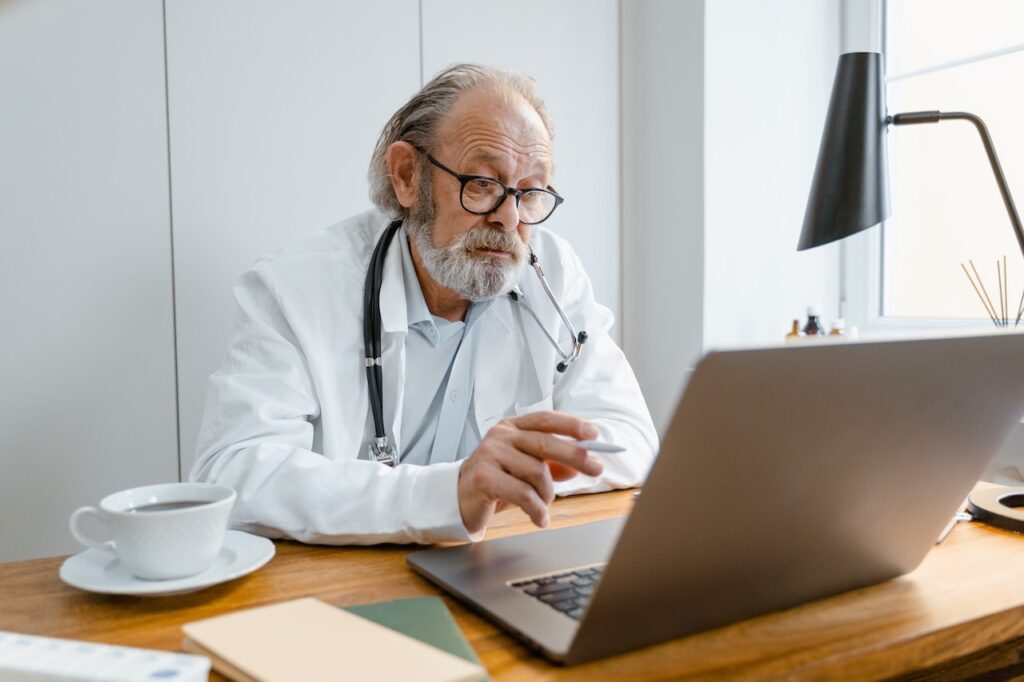
While addressing the direct effects of the COVID-19 pandemic takes precedence for many healthcare organizations, patients have been eager to utilize telemedicine.
In OECD countries, most patients who have used virtual care have reported positive experiences. Patients have also expressed interest in using telehealth after the pandemic ends.
Remote Patient Monitoring (RPM)
RPM is a form of telemedicine involving digital technology to monitor the medical and personal data of current or prospective patients. This information is then transmitted to the physician so that they can make necessary changes in their patient’s care plan.
For example, physicians who use RPM can monitor the blood pressure of patients on dialysis or monitor the glucose levels of diabetic patients. This allows them to make better and more informed decisions regarding their patient’s health. Less trips to the clinic can result in better patient outcomes and savings over time.
Telemedicine allows the real-time transmission of data, which can be very helpful to chronically ill people who want to monitor their condition and prevent it from worsening. This could lead them into an emergency room or hospitalization. Patients who cannot visit their doctors’ offices regularly or require transportation can benefit greatly from this technology.
Personalized Medicine
Telemedicine is becoming vital to healthcare delivery as systems strive to reduce COVID-19’s impact on patient care. Telemedicine allows physicians to provide specialist care to rural hospitals and patients remotely.
Telemedicine solution Memphis TN, is becoming more popular for managing chronic diseases since it allows patients to consult a doctor conveniently without traveling. It is especially useful for patients who have chronic conditions such as diabetes or high blood pressure and may need to schedule regular appointments.
Critics of telemedicine claim that the patient relationship may suffer as in-person interactions allow healthcare providers to develop a therapeutic bond with their patients. Video technology could help overcome this problem by enabling the healthcare provider to see a patient’s non-verbal cues and facial expressions. The healthcare provider could then determine the cause of the patient’s symptoms and create a customized treatment plan.
Personalized Health Management
In the USA, chronic diseases like diabetes and heart disease cause most deaths. These diseases also drive the nation’s $3.5 trillion annual healthcare costs. Managing these conditions often involves a series of return clinic visits, often with patients traveling long distances to get care. Telemedicine offers a convenient and safe solution to this problem.
Patient experience studies show that many patients favor virtual appointments, as they eliminate barriers such as travel time, childcare or caretaker availability. In addition, patients who have missed their positions due to scheduling conflicts, forgetfulness or unforeseen circumstances can still consult with their physician remotely.
Although telemedicine is becoming more common, physicians should maintain ethical boundaries by ensuring that patients are fully aware of the functionality and limitations of telemedicine before agreeing to a visit. In addition, they should ensure that patients understand their rights regarding privacy and autonomy. This is an important aspect of maintaining a high-quality telemedicine service.
Personalized Healthcare Delivery
A personalized healthcare approach can improve patient outcomes while reshaping how patients access and engage with their care. Whether it is pillboxes that track medication adherence or online dietary consultations, personalization allows healthcare providers to deliver a wide array of ancillary services in addition to the traditional face-to-face patient encounter.
A shift toward a personalized treatment plan will help reduce patient stress, increase confidence levels in their clinician’s chosen approach, and provide them with tailored supplementary care specific to their needs. Additionally, telemedicine for remote monitoring will allow patients to stay connected with their care team even after a hospital stay or pandemic ends.
Telemedicine can also mitigate the physician shortage in rural areas and offer patients with rare diseases alternative avenues for highly specialized care. Replacing in-person appointments with virtual ones decreases carbon emissions and allows patients to access care anywhere.






